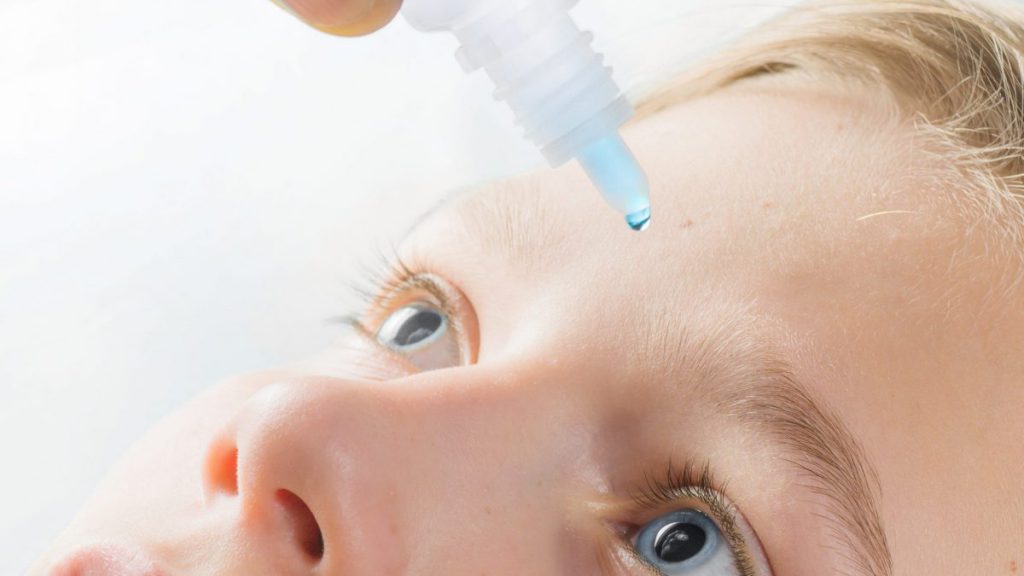It is predicted that by 2050, nearsightedness, or myopia, will be prevalent in 50% of the population. Children diagnosed with Myopia experience a consistent worsening vision as they grow into adolescence. This can become a financial burden and inconvenience, constantly having to switch your child’s prescription. There are options parents can try to steadily resolve vision deterioration at a young age.

What is Myopia?
Myopia is an eye condition, not a disease. It’s a refractive error caused by the eyeball growing too long during childhood. While an exact cause of progressive myopia is not known, research indicates that a combination of environmental and hereditary factors trigger the condition. The best way to help control the progression of myopia is to practice a healthy lifestyle.
Natural Remedies
Unfortunately, programs said to treat myopia naturally are disproved by doctors to be a waste of money and time. There is no proven method to completely cure one of myopia. Regular exercise and maintaining a balanced diet goes a long way to significantly decrease the risk of poor vision. Spending time outside can also positively affect children’s health. The reason being is because components of sunlight activate vitamin D, playing a role in eye growth. Additionally, kids engage in more distance-vision activities when they’re outside, which places fewer strenuous near-vision demands on young eyes.
Distance Center Multifocal Contact Lenses
There are two types of contact lenses specially designed to control myopia. One treatment utilizes distance to center, which means the area for seeing at a distance is in the center of the lens, providing clear vision and slowing the progression of myopia. Distance Center Multifocal Contact Lenses can be worn as normal lenses during the day. The central portion compensates for difficulties seeing from afar. The outer area has a relatively positive power to reduce hyperopia defocusing, giving you improved far-range visual acuity.
Orthokeratology
The other option for lenses is Orthokeratology lenses, specially designed gas permeable contact lenses for overnight wear. These lenses are a safe and convenient option that reshapes the front surface of the eye (cornea) while you sleep, temporarily reversing myopia. You remove the lenses when you wake up and you can see clearly throughout the day without glasses or contact lenses. Evidence suggests nearsighted kids who undergo several years of Ortho-k may end up with less myopia as adults, compared with children who wear eyeglasses or regular contact lenses during the peak years of myopia progression.
Multifocal Eyeglasses
Evidence suggests wearing eyeglasses with bifocal or progressive multifocal lenses may slow the progression of nearsightedness in some children. Although studies show glasses are not the most effective method listed, any effort committed to helping relieve a child’s worsening vision is what matters. The technology in multi-focal eyeglasses magnifies the power in lenses, reducing focusing fatigue during reading and other close work, a problem that may contribute to increasing myopia.
Atropine Drops
Atropine drops are a daily-use prescription eye drop shown to have impressive results. Nearsightedness in children is linked to focusing fatigue, so investigators have looked into using atropine to disable the eye’s focusing mechanism. This would control the myopia. Topical atropine is used to dilate the pupil and temporarily relax the eyes’ focusing mechanism. It is usually prescribed in very small doses. However, additional research has shown that the control of myopia effects do not continue after the first year of treatment, and that short-term use of atropine may not control nearsightedness significantly in the long run.

Finding the right myopia control depends on the child, the severity of the case, and a consultation with an experienced eye doctor in order to determine the best solution. If your child wears glasses, make their vision a priority; schedule an eye exam to ensure stable vision and healthy eyes.


